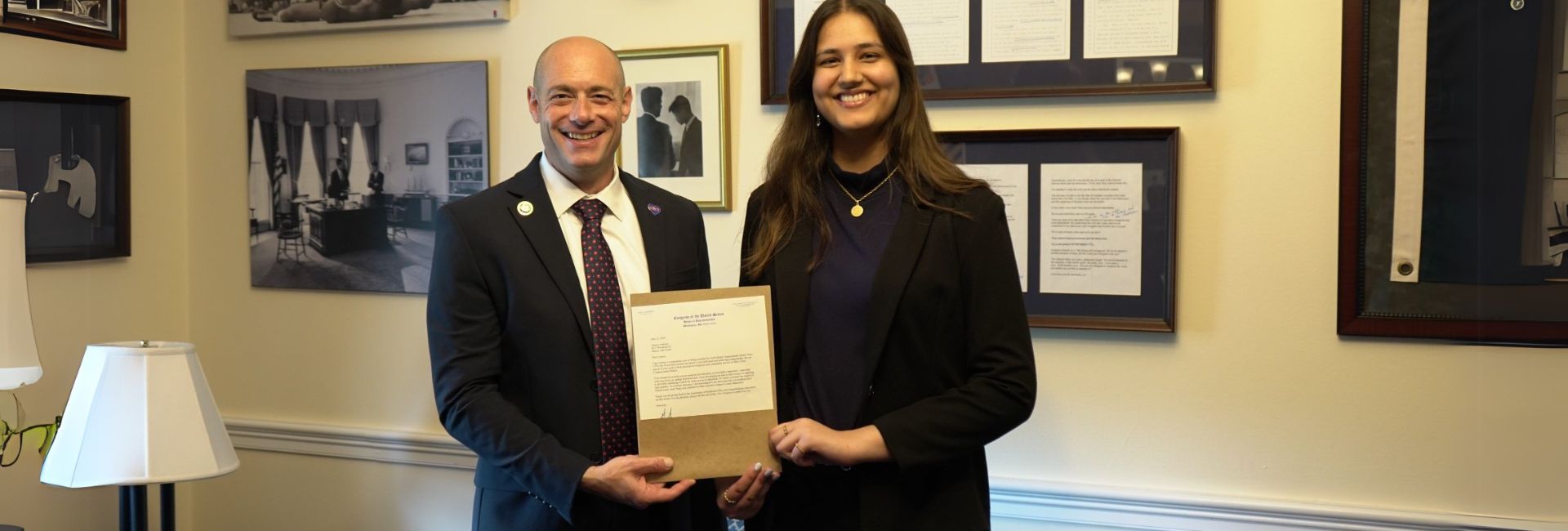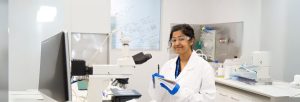(April 17, 2025) Every year, nearly a third of all food produced globally—about 1.3 billion tons—is lost or wasted. A large portion of that loss happens even before food leaves the farm, due to factors like crop disease, poor infrastructure, and lack of early detection tools. In low- and middle-income countries, these losses hit hardest, where farmers often lack access to technology that could help them identify problems early and respond in time. It’s not just a waste of food—it’s a waste of resources, time, and livelihoods. In Mason, Ohio, a 17-year-old high school student named Laasya Acharya has been working on a way to change that. Her project, which earned her a spot among the top 40 finalists of the 2025 Regeneron Science Talent Search, focuses on early detection of crop disease using a drone equipped with a neural network. It’s a system she built herself—programmed, tested, and refined using real-world data and input from farmers and agricultural researchers. The drone takes images of crops, processes them with onboard AI, and identifies signs of disease with nearly 90% accuracy.
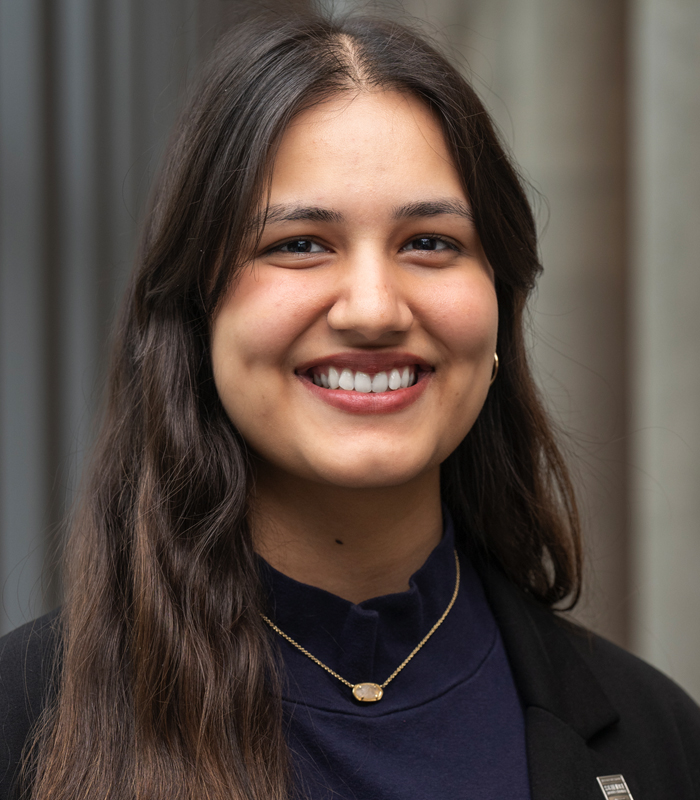
Laasya Acharya
Laasya’s motivation comes from both a love of technology and a growing concern about food insecurity. “I wanted to create something that could make a real impact, especially in parts of the world where farmers don’t have access to early detection tools,” she says. Her work is rooted not just in innovation, but in empathy—a quality she credits to her early exposure to social issues and her work through The Ceres Organisation, which she founded to raise awareness about food insecurity and promote STEM education.
From Lemonade Stands to Robotics
Long before neural networks and AI-powered drones, Laasya was the kind of child who chased curiosity wherever it led her. Her journey into science began at the age of seven, when she saw an ad for a LEGO EV3 Mindstorms robotics kit in a magazine. Determined to get her hands on it, she set up a summer-long lemonade stand to save up the money. By the time school started, she had enough to buy the kit.


Finding Her Voice in Science Fairs
From there, she dove headfirst into robotics. She built a robotic snake, an alarm clock, and even a mechanical dog in an effort to convince her parents she was ready for a real pet. Each project deepened her interest in coding and sparked her love for building things from scratch. She would soon begin tagging along to science competitions where her older sister was presenting. Though she wasn’t competing yet, Laasya was hooked on the buzz of ideas, the joy of presenting, and the excitement of learning from other young inventors.
Coding for Crops and Communities
Her first science fair came in fifth grade, and with it, the realization that she not only loved the technical side of innovation, but also the process of explaining her ideas to others. That blend of hands-on creation and communication would stay with her. “There’s something about standing by a poster and walking someone through your work—it’s not just about the science, it’s about connecting,” she reflects.
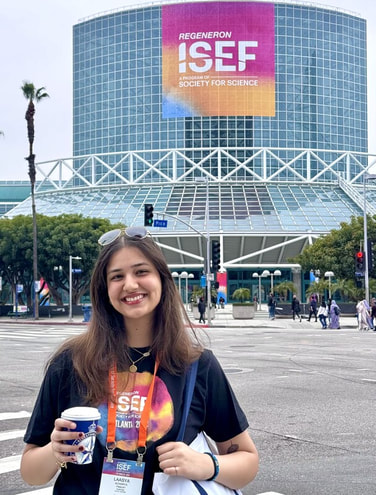

Building Tools That Work in the Real World
As she grew older, her interests began to converge around environmental science and food systems. Laasya was struck by the scale of food waste, especially in agriculture, where early-stage disease goes unnoticed and crops are lost before they ever reach a plate. Her curiosity led her to learn more about AI, remote sensing, and plant pathology. Soon, she was building a system that combined all of them.
A Real-World Solution, Not Just a Science Fair Project
Her Regeneron project is both sophisticated and practical. She didn’t want a solution that worked only in theory or in a lab. She wanted something farmers could actually use. She spoke with experts, collected hundreds of images, and trained her model to work under real-world conditions. “It was important that the technology be accurate, but also accessible,” she says. The final prototype, a drone paired with a trained neural network, is designed to work in the field and give farmers quick feedback.
The system uses a combination of aerial and close-range crop images taken by the drone. These images are processed using a multimodal neural network Laasya developed, which can detect multiple types of plant disease at once. The AI classifies the visual data in real time, alerting farmers to any signs of infection with a high degree of accuracy. Her model was trained on a dataset collected through partnerships with local growers and agricultural research institutions, making sure it reflects the variety and unpredictability of real-world farming conditions. It’s not just high-tech—it’s built to be practical, scalable, and affordable for farmers anywhere.
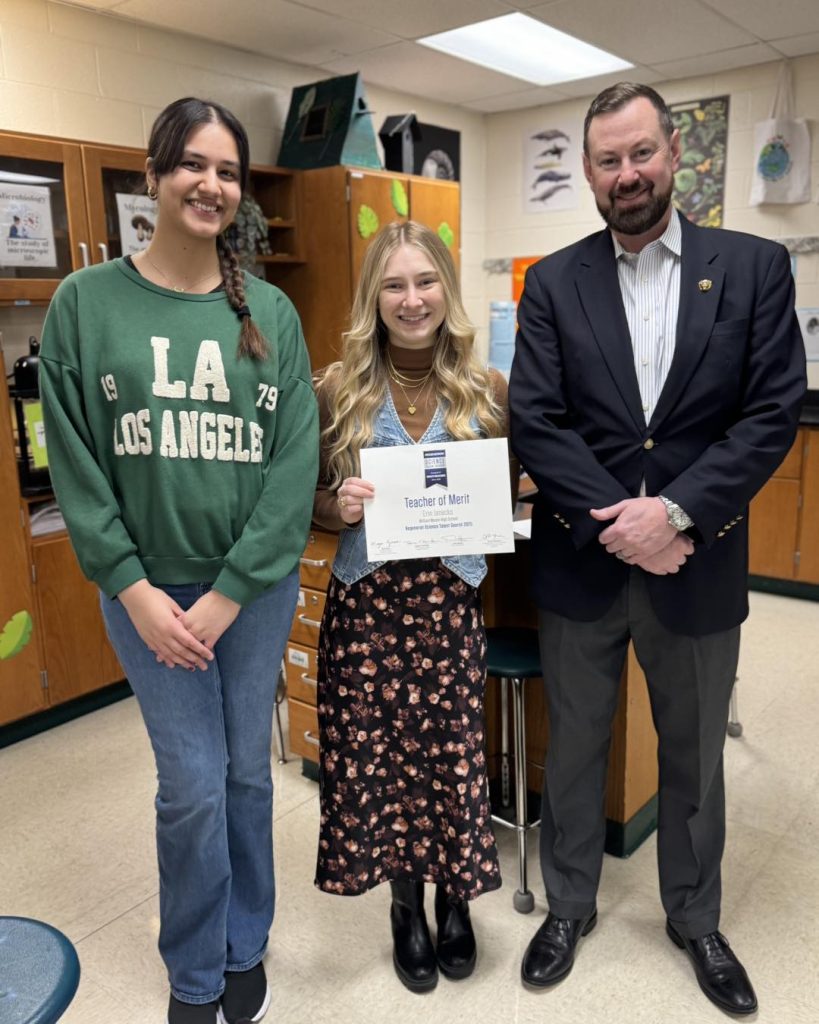

Part of a Bigger Wave: Diaspora Teens Driving Change
Laasya is not alone in her efforts. Across the Indian diaspora, a growing number of teenagers are using science and technology to address global challenges. From AI to environmental conservation, Indian-origin teens in the U.S., Canada, and beyond are making headlines with innovative ideas and a strong sense of purpose. They’re participating in global science fairs, leading grassroots campaigns, and launching startups before they even graduate high school. Many of them, like Laasya, blend technical skill with a desire to serve communities—whether through building practical tools, shaping policy, or promoting education access. Together, they represent a new generation of changemakers who are turning personal passion into public impact.
Beyond the Lab: Science as Service
Beyond her project, Laasya has spent time tutoring other students, volunteering at science camps, and building community through STEM outreach. Through The Ceres Organization, she organizes programs to educate others about food insecurity and sustainability, aiming to make science more inclusive and grounded in real-world issues.
For her, science isn’t just a subject—it’s a tool for change. “We as young scientists have a chance to shape the future,” she says. “It’s not just about coding or engineering—it’s about solving problems that affect real people.”
Looking Ahead with Purpose
Looking ahead, Laasya hopes to study environmental engineering and continue developing solutions at the intersection of technology and sustainability. She wants to work on problems that matter—ones that connect data, climate, food, and human health. Her dream is to see more innovation come out of empathy, more engineering shaped by everyday needs.
Back in Ohio, the drone makes a gentle landing as Laasya checks its data on a tablet. The farm is quiet again, but the work continues. For Laasya Acharya, innovation isn’t something that happens far away in labs or boardrooms. It starts wherever there is a question worth asking, and someone curious enough to find an answer.
- Follow Laasya Acharya on LinkedIn
ALSO READ: Shield Seniors: How Dallas teen Tejasvi Manoj is using AI to protect elderly from online scams

